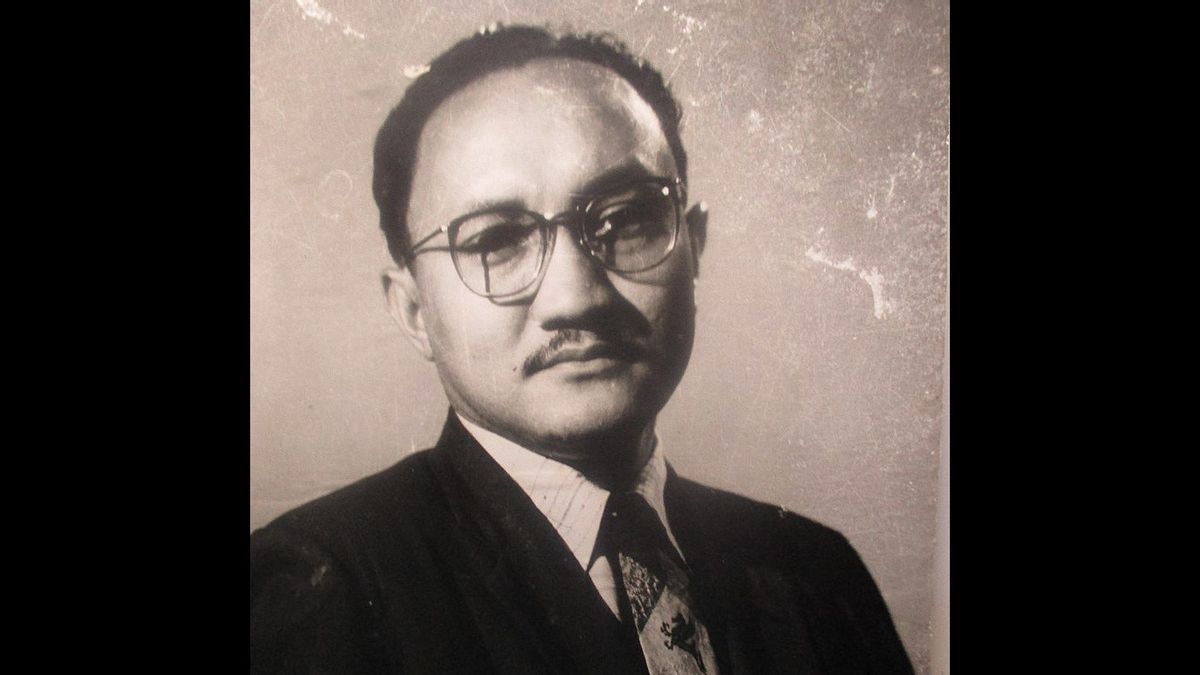JAKARTA - In the 1950s, Western-made films became king in the archipelago. Every high-class cinema is always scrambling to show these films. A number of figures, such as Clark Gable, John Wayne, and Marlon Brando, became idols of the 50s generation. Usmar Ismail broke that. Through the film Crisis (1953), Usmar Ismail became the savior of Indonesian cinema.
In contrast to Western films, the works of Indonesian filmmakers have not been glimpsed. Underestimated. Even if it is broadcast, it is limited to public cinemas. At the beginning of independence, the Indonesian film industry was stagnant. Not moving at all.
Even though the government has nationalized the Dutch company, the Pacific Corporation, to become the National Film Center (PFN), domestic films have not yet taken off. The end is that the changes are not quickly supported by strong regulations in order to advance national films.
Moreover, the faucet for importing foreign films that was opened as wide as possible made the Indonesian film industry even more squeezed. As a result, the 50s generation mostly liked Western films rather than domestic films.
Cowboy films were the most popular. Generally, in these films there were frequent battles between white European immigrants and indigenous Indians, who were often criminals.
Through these films, the names of Western actors and actresses, such as Clark Gable, John Wayne, Ava Gardner, and James Stewart are praised by their fans in Indonesia. There are hardly any domestic actors on the list.

“I remember these names (actors and actresses) all because I myself really enjoyed watching movies at that time. It is not wrong if there are some readers who want to say that I am influenced by western culture - I do not reject it as long as it is not said to be westernized. But as far as I know, many teenagers in Jakarta or in cities in Indonesia in the 1950s were also like me, ”Firman Lubis told of his experience of being exposed to western films of the 1950s in the book Jakarta 1950-1970 (2019).
Unbalanced competition can be seen clearly. At that time, there were around 600 cinemas in Indonesia. Most of the cinemas actually provide a large portion of Hollywood films. Meanwhile, domestic films only get a viewing share of 15 percent. This number shows the omnipotence of the Hollywood film industry in the archipelago.
The emergence of Usmar IsmailHowever, Bumiputra filmmakers are not discouraged. Some of the native filmmakers who had studied film in the Japanese colonial era immediately stepped on the gas. One of the popular names is Usmar Ismail.
At that time, Usmar Ismail could transform into anything to achieve totality in the world of film. At one time he could become a director, screenwriter, driver, and even porters.
“During the reign of the Republic of the United States of Indonesia, Indonesian cinema was colored by the work of film workers, some of whom came from educated personnel and were members of film artist organizations. The film that was sticking out at that time was Usmar Ismail's Blood and Prayer in 1950. Most of the contents of the films at that time were like plays which were equipped with dialogues and speeches like films during the Japanese colonial period, "wrote Novi Kurnia in the journal Sluggish Growth of the Film Industry (2006 ).

Usmar Ismail then showed his quality when working on the film Blood and Prayer. The film comes with a lot of production funds. The production alone costs IDR 350 thousand.
The cost is quite expensive, because the average cost of domestic films is only around Rp. 100,000. The values of patriotism and humanity are an interesting combination of this film. The fruit, the film Blood and Prayer became the first film about the Indonesian revolution.
And the first shooting date for the film Blood and Prayer, March 30 to this day is remembered as National Film Day.
Usmar Ismail's fist
After the success of Blood and Prayer, Usmar Ismail participated in the making of other quality films. Some of them are Six Djam in Djogdja (1951), Dosa Unforgivable (1951), and Kafedo (1953).
Nevertheless, this series of films is less attractive to the audience, even though the quality is quite good. Usmar Ismail racked his brains. Usmar Ismail then began making films that followed the tastes of the times.
The film Crisis (1953) was born. This film was made to refer to Indonesia which is currently in a crisis situation. Usmar Ismail shrewdly described Indonesia at that time as if it were in his film.
As a writer, Goenawan Mohamad mentions that in the film Crisis, there is a picture: a cramped living space, human relationships that are bitter but ridiculous, and there is no way out.
However, the film Crisis fared badly. Usmar Ismail has difficulty finding screen time or broadcast time for his films in first-class cinemas. In fact, the chairman of the film censorship committee Maria Ulfah Subadio (1950-1961) and the Mayor of Jakarta, Sudiro (1953-1960) - the grandfather of Tora Sudiro - have made efforts to ensure that every first-class cinema plays at least one Indonesian film title once every six months. .

Usmar Ismail was heartbroken. He then looked for another way alone. "The talk of Indonesian filmmakers is considered lonely, campaign actions do not work, writings and criticisms in newspapers are not listened to," Rosihan Anwar tells in the book History Kecil "Petite Histoire" Indonesia Volume 2 (2009).
"The cinema owner goes on his own according to his wishes. Usmar takes a shortcut. He wants his film to be screened in the Capitol cinema located on Jalan Pintu Air, Jakarta, but he can't. He immediately goes to see Mr. Weskin, a cinema entrepreneur, a Jew. He doesn't say much. Again. Usmar immediately threw his fist at Mister Weskin's face. Raw Bogem landed in front of the ruling cinema owner. Weskin understands. Capitulation. "
Since then Usmar Ismail and Mister Weskin, who are bald and like to wear a bow tie, have become friends. Usmar's film is shown in Capitol theaters. Usmar Ismail no longer feels the problem of finding screen time.
Usmar Ismail's courage to take the cowboy style path did not only make the film Krisis become the highest-grossing Indonesian film of its time. Usmar Ismail made a new milestone for Indonesian cinema. And most importantly, Usmar Ismail is the pioneer for other filmmakers to show their films in first-class cinemas.
"The crisis has finally been accepted into the cinema - I don't know, is it because of Usmar's bogem. Remarkably, Usmar has succeeded in making history. This film is able to last five weeks, drawing 4 thousand viewers every day. It can even outperform Ivanhoe's film, although not as potent as Quo Vadis - the last two films were made by leading producer MGM, ”wrote in a report from Tempo Magazine entitled Bogem Usmar Ismail Meloloskan" Crisis "(1998).
* Read other information about FILM or read other interesting articles from Detha Arya Tifada.
MEMORY OtherThe English, Chinese, Japanese, Arabic, and French versions are automatically generated by the AI. So there may still be inaccuracies in translating, please always see Indonesian as our main language. (system supported by DigitalSiber.id)









